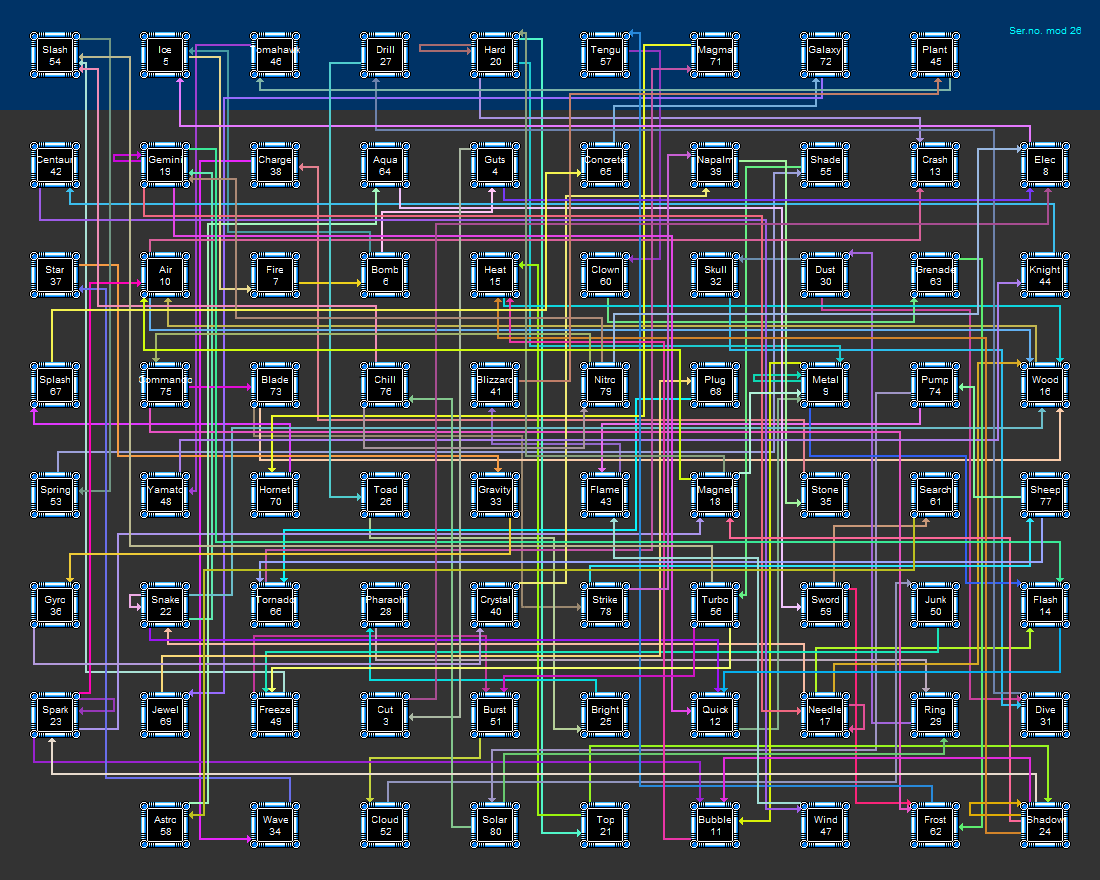by Palmer Mebane

Each of the 78 frames in the image represents one of the main bosses from the 10 classic Megaman games. These are the games named Megaman N for N from 1 to 10, with the first six on the NES, seven on the SNES, eight on the PS1, and nine and ten as downloadable games on Wii/PS3/X360.
An arrow points from X to Y if the weapon received from X is particularly effective when fighting Y. Here "particularly effective" means the following:
- The weapon does strictly more than twice the damage the ordinary P.Buster does.
- The weapon does the most damage to the boss out of all available weapons from that game, and this number is strictly more than the P.Buster damage.
- A special case is Heat Man's weapon, which has three levels of charge. Heat Man's weapon kills Normal-mode Wood Man in one hit when fully charged (as opposed to 14 P.Buster shots), but does not do significantly more damage to other bosses relative to the P.Buster and the time spent charging. So Wood Man is considered the only one weak to the weapon. As a hard guideline, assume the damage done by Heat Man's weapon is a quarter of the damage dealt by the fully charged weapon.
Note that in some games, bosses from other games were rematched. In particular, Megaman 3 requires the player to fight all the bosses from Megaman 2 again, and Megaman 10 requires a rematch with one boss from each of the previous nine games. The extra arrows introduced by these weakness relationships make the graph fully connected.
Each boss of the original games also has a serial number from 3 to 80. Take these numbers mod 26 for the bosses in the top row and convert them to letters. This spells the answer BETA TESTS.